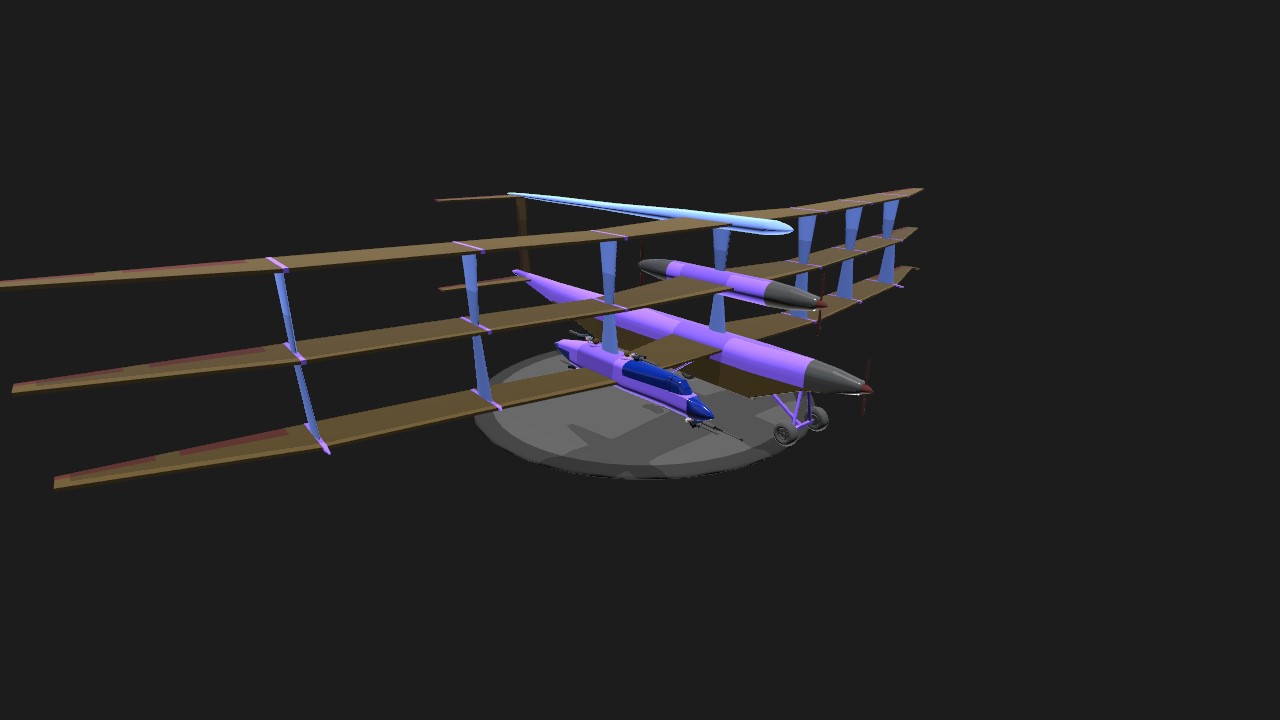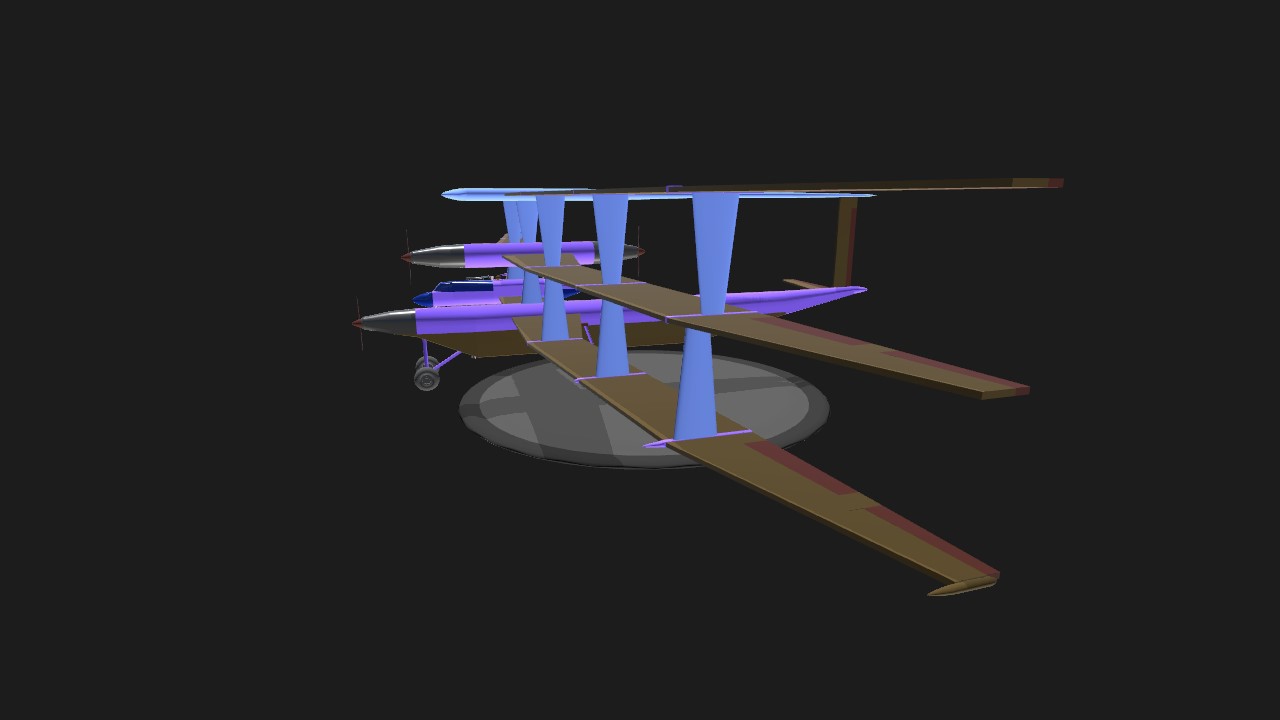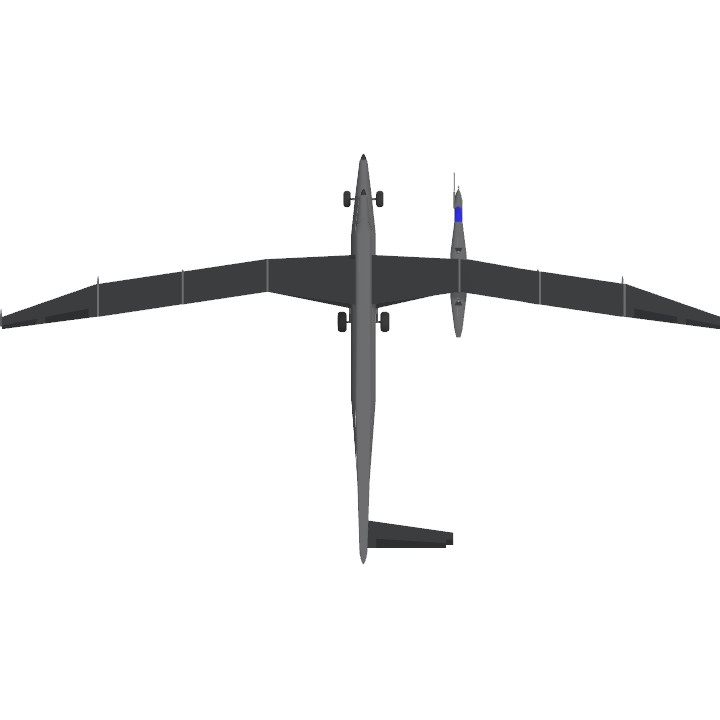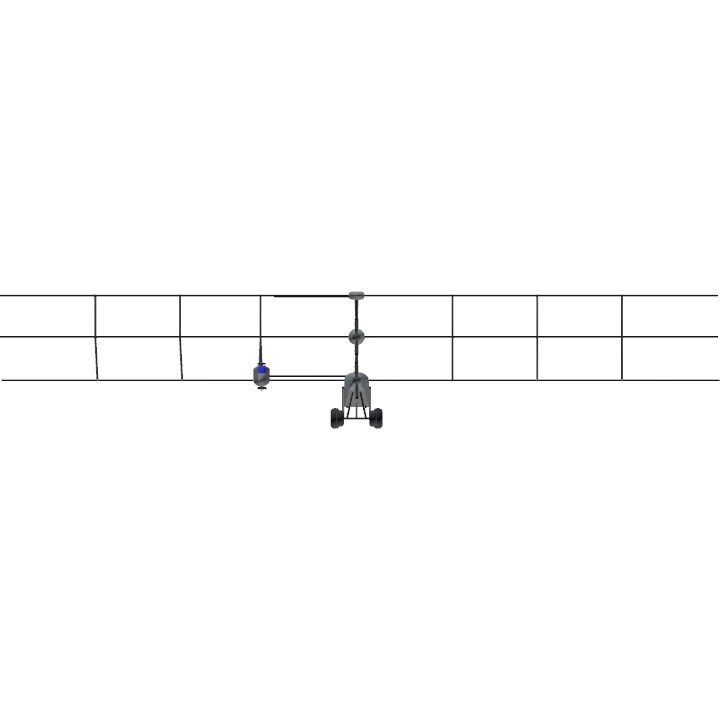While nowadays asymmetric aircraft are mostly characteristic of CIR aircaft development syndicates, one irony is that the actual first post-Crumbling aircraft of this type was actually a LRI one: the Libeccio.
This aircraft had originally been designed in anticipation of the complete reunification of the Italian peninsula, expecting them to be used both to bring order to the Mediterranean sea and conquer the islands around the peninsula. The justification for this strange arrangement is the following: To carry the extra fuel and payload needed for missions that were expected to include not just bombing but also maritime patrol, it would need three engines, both to lift the extra load and maintain redundancy. However, a conventional configuration had two drawbacks: Firstly, a nose engine would obstruct the pilot's view, and a pusher layout would block off the rear view. Second, a conventional layout would mean two out of three engines would impose asymmetric thrust on the aircraft if they suffered from engine failure. The aircraft's layout effectively sacrifices starboard vision to maximize the field of view in every other direction, neutralizes asymmetric thrust and, as became clear in early accidents, isolates the aircrew from the fuselage's fuel tanks and engines while also making bailing out safer. All this at a drag cost though.
In the end, the CIR intervention only allowed a small amount to be fielded at the time. However, it, like the other LRI aircraft continued to be produced by the newly born Tyrrhenian Confederation, becoming appreciated for it's ability to shut down any of it's three engines without suffering from asymmetric thrust, thus confering it a high endurance; as well as it's visibility. Just as originally intended, Libeccios in Tyrrhenian service were fitted with 25 mm cannons to both improve their ability to sink pirate speedboats and supress enemy anti-aircraft fire.
Controls:
8: Engines and bomb bay (Throttle, VTOL)
1-4: Gunner positions (Throttle + VTOL)
Specifications
General Characteristics
- Created On Windows
- Wingspan 143.0ft (43.6m)
- Length 81.3ft (24.8m)
- Height 27.2ft (8.3m)
- Empty Weight 10,969lbs (4,975kg)
- Loaded Weight 15,728lbs (7,134kg)
Performance
- Horse Power/Weight Ratio 0.047
- Wing Loading 5.7lbs/ft2 (27.9kg/m2)
- Wing Area 2,755.6ft2 (256.0m2)
- Drag Points 13041
Parts
- Number of Parts 204
- Control Surfaces 16
- Performance Cost 969






